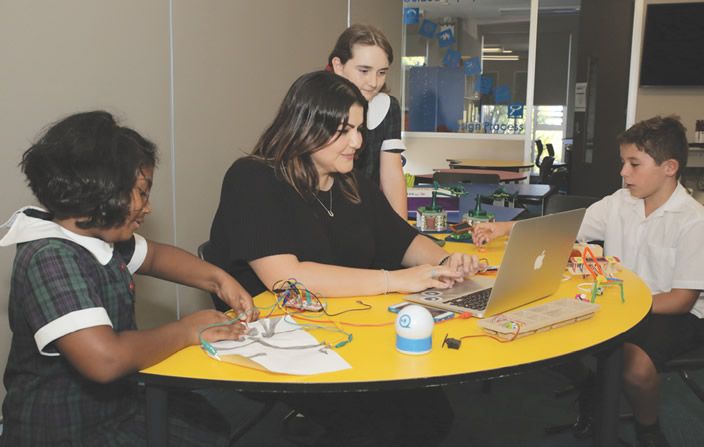
The Maker Movement is a technological and creative learning revolution underway around the globe that has exciting implications for the world of education, Zeina Chalich writes.
New tools and technology, such as 3D printing, robotics, microprocessors, wearable computing, etextiles, ‘smart’ materials, and programming/coding languages are being invented at an unprecedented pace.
The Maker Movement creates affordable versions of these inventions, while sharing tools and ideas online to create an innovative, collaborative community of global problem seekers and solvers. The Maker Movement in education is built upon the foundation of constructionism, which is Seymour Papert’s philosophy of hands on learning through building things and sharing with others. The Maker Movement overlaps with the natural inclinations of children and the power of learning by doing.
A place to tinker
A Makerspace is a virtual and physical space that serves as a community hub for the Maker Movement in education – a place for inventing, tinkering and hacking. It’s an innovative and non structured environment where learners can connect, create, collaborate, share, and explore the elements of STEAM (science, technology, engineering, art and maths) through experiential play.
The aim is for students to acquire skills and knowledge while solving an authentic problem, creating a product or generating a new understanding. Ultimately as 21st century teachers in a digital age, we want our students to turn their knowledge into action, to become creators, not mere consumers of technology.
A Makerspace is flexible by nature, where tools, technology, expertise and networks evolve and change to suit the range of student led DIY projects, sometimes with the help of mentoring from experts in the field. In some schools, these areas are found in libraries, media centres and computer labs. For teachers with limited space, creative use of tinkering tables in the class break out rooms or a dedicated corner of the classroom suffice in providing students with the same learning experiences. Ideally, every classroom has the potential to be a makerspace.
Pop up space
At St Finbar’s we have transformed an unused corner of the library into a pop up makerspace, by upcycling old computer desks into high standing tinker tables, coated in whiteboard paint. We have used old library shelves to store our resources and projects. This year our students have had opportunities to amplify their learning experiences through interaction with innovative materials in our makerspace. Digital fabrications such as physical computing including arduino, makey makey, robotics and electronic modules like littlebits have expanded our students tool box with new ways to make things and new things to make. They’ve learnt to empathise when designing solutions for existing problems through design thinking and to embrace failing as part of an innovator’s mindset.
Making is about the act of creation with new and familiar materials. Essentially, there are different processes to introduce ways of learning and knowing in a makerspace. These include tinkering, making and engineering. During the tinkering phase our students have ‘played’ with different materials and tools to experiment and discover ways of solving simple problems. When making, our students have used tools and materials to follow a task and create a product. The engineering phase extracts learning principles from tinkering and making. This process involves students using a design thinking process to identify and seek potential ways to solve authentic problems, usually resulting in the creation of a new product using a range of tools and materials.
In our agile makerspace we have a range of fixed and pop up learning stations that change based on the learning needs of the project and students. An example of a pop up station would be the take apart tech lab where students take apart old technology to learn how it works and attempt to put it back together. A fixed station is our littlebits lab which is where students can use magnetic electronic modules to create a range of circuits to make things do things, often there is a design challenge left on the table for students to complete with others.


































































































































